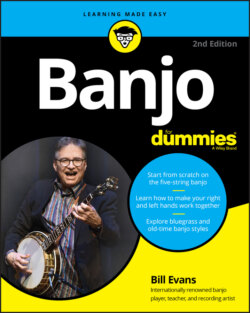Читать книгу Banjo For Dummies - Bill Evans - Страница 18
BANJOS OF ALL SORTS
ОглавлениеIn the early decades of the 20th century, America was mad for anything that sounded remotely like a banjo. (Amazing, isn't it? Just like it is today!) Instrument makers took guitar and mandolin necks and attached them to banjo bodies, creating new kinds of instruments of all sizes that had that great banjo sound but could be played using guitar and mandolin techniques.
Banjos with mandolin necks usually have eight strings and are called mandolin banjos or mando-banjos. These instruments are smaller than most five-string banjos. Banjos with guitar necks have six strings and are called guitar banjos. These instruments are perfect for guitar players who want that banjo sound (and maybe are too lazy to actually learn to play the banjo — but you didn't hear that from me!). Guitar banjos have six strings instead of five and can be a bit larger than most five-string banjos.
Today, these more obscure branches of the banjo family tree are seen largely as novelty instruments and, like the tenor and plectrum banjo (see the section “Tenor and plectrum banjos: Look for another book” in this chapter), are considered to be a different kind of instrument than a five-string banjo. Mandolin banjos are played like mandolins, and guitar banjos are played like guitars.
